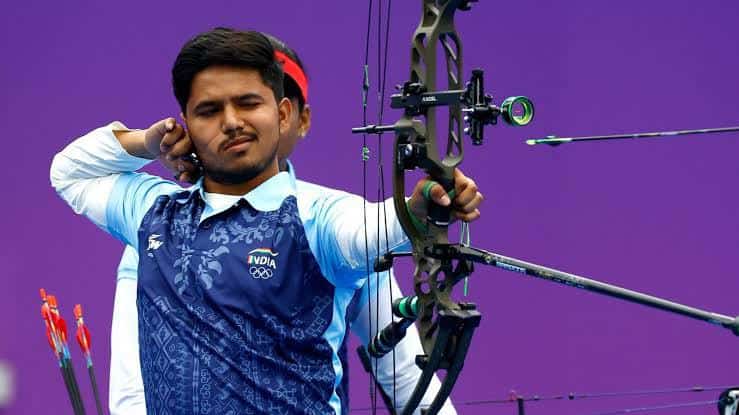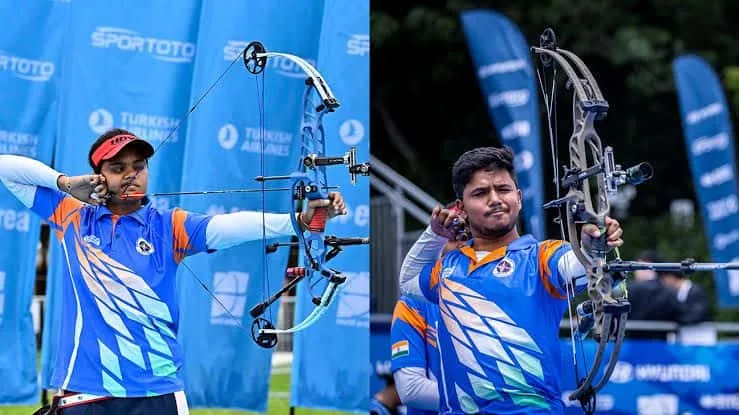Paris Olympics 2024: Archery, a sport steeped in ancient traditions and modern innovations, has long been a fixture at the Olympic Games. However, compound archery will be absent in the upcoming Paris Olympics in 2024 and the subsequent Los Angeles Olympics in 2028 and will be replaced by recurve archery. This decision by the International Olympic Committee (IOC) raises questions about the sport’s evolution, its appeal on a global scale, and the criteria used for Olympic inclusion.
History and Evolution of Archery in the Olympics
Since its inclusion in the modern Olympics in 1900, archery has showcased the skill and precision of athletes wielding recurve bows. These bows, characterized by their simplicity and reliance on the archer’s strength and technique, have been the cornerstone of Olympic archery. Athletes, particularly from countries like South Korea, have dominated this discipline, showcasing centuries-old techniques blended with modern training methods.
Compound vs. Recurve Archery
The distinction between recurve and compound archery lies not just in their equipment but also in their historical and technological backgrounds. Recurve bows, tracing their lineage back to ancient civilizations and myths like that of Arjuna in Indian epics, embody a traditional form that has evolved modestly with time. In contrast, compound bows emerged in the 1960s, integrating advanced mechanisms such as cams and cables to enhance accuracy and reduce physical strain on the archer.

Global Success and Recognition of Compound Archery
Despite its absence from the Olympic stage, compound archery has flourished in other international competitions. Events like the World Archery Championships and the World Games have embraced both recurve and compound categories, highlighting the global appeal and competitive spirit within the sport. India, for instance, achieved a historic milestone in 2023 when its women’s compound archery team clinched gold at the World Archery Championships, underscoring the growing prowess and recognition of compound archers on a global scale.
Challenges to the Paris Olympics 2024 Inclusion
The IOC’s decision to exclude compound archery from the Olympics reflects several considerations. Firstly, there is a preference for sports with deep historical roots and widespread global participation. Recurve archery, having been part of the Olympic program since its inception, aligns closely with these criteria. In contrast, compound archery, despite its technical advancements and competitive appeal, remains relatively new and less universally practiced.
Economic and Accessibility Issues
Furthermore, the accessibility of compound archery poses challenges, particularly in developing nations where the high costs of equipment and training may limit participation. Unlike recurve archery, which requires minimal equipment beyond a bow and arrows, compound archery demands specialized gear and ongoing maintenance, creating financial barriers that hinder its widespread adoption.
Spectator Appeal and Media Coverage
The spectator appeal of archery, while captivating for enthusiasts, may also influence Olympic decisions. The tension and precision demanded by both recurve and compound archery can be enthralling to watch, yet the IOC may prioritize sports with broader fan bases and media appeal. Compound archery, with its emphasis on individual concentration and technical proficiency, may struggle to attract the same level of mass audience as more mainstream Olympic sports.
Future Prospects and Olympic Aspirations
Looking ahead, proponents of compound archery continue to advocate for its inclusion in future Olympic Games. Initiatives such as its inclusion in the World Games and regional competitions underscore its growing presence and competitive legitimacy. However, achieving Olympic status requires not only sporting excellence but also alignment with the IOC’s strategic objectives, including global appeal, accessibility, and sustainability.
FAQs
Why is compound archery not included in the Paris Olympics 2024 and Los Angeles Olympics 2028?
Compound archery, despite its technological advancements and popularity, is not included in these Olympic Games primarily due to the International Olympic Committee’s (IOC) preference for sports with deep historical roots and global accessibility. Recurve archery, which has been part of the Olympics since 1900, is seen as a purer test of skill and aligns more closely with Olympic tradition.
Has compound archery achieved success outside of the Olympics?
Yes, compound archery has gained recognition through events like the World Archery Championships, where athletes from around the world compete at the highest level. Indian athletes, in particular, have excelled in compound archery, winning world championship titles and showcasing its growing popularity and competitive nature.
What is the difference between recurve and compound archery?
Recurve archery uses simpler bows that rely on an archer’s strength and technique, tracing its roots back to ancient practices. Compound archery, on the other hand, employs modern bows with pulley systems and cams that reduce draw weight, allowing for greater accuracy and consistency. This technological advantage makes compound archery attractive to athletes looking for precision and reliability.








